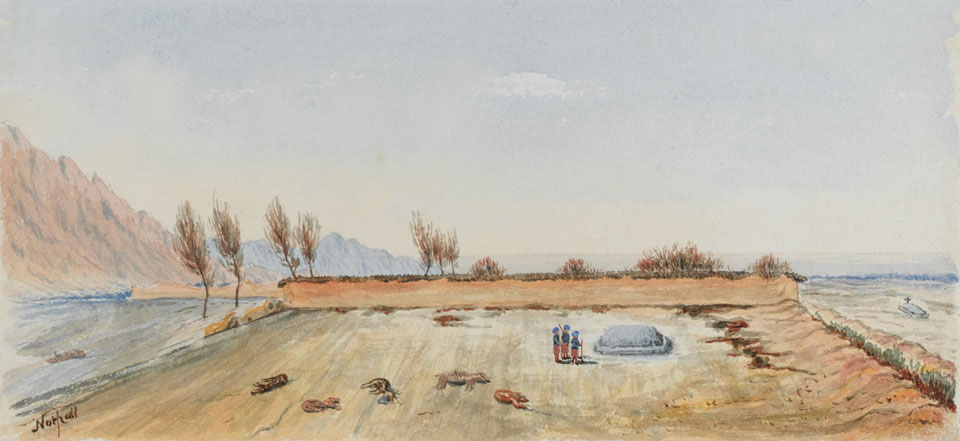
Online Collection
« Prev - 1 of 1 results - Next »
The ground where the 66th Foot made their last stand at Maiwand, 1880
Watercolour Henry John Nuthall, Bengal Staff Corps, 1880.
The Battle of Maiwand was one of the largest battles of the 2nd Afghan War (1878-1880). A British-Indian force under General Burrows had been sent to intercept Ayub Khan, who had launched a bid for the Afghan throne, as he advanced from Herat towards Kandahar. On 27 July 1880 Burrows' force was overwhelmed by an Afghan army ten times its size. The final act of the battle was the last stand of the 66th Regiment. Lieutenant-General J M Primrose's official despatch described it thus:
'I have it on authority of a Colonel of artillery who was present at the time, that a party of the 66th Regiment which he estimated at 100 men and officers made a most determined stand in the garden. They were surrounded by the whole Afghan army and fought on until only eleven men were left inflicting enormous losses on the enemy.
These eleven men charged out of the garden and died with their faces to the foe fighting to the death; such was the nature of their charge and the grandeur of their bearing that although the whole of the Ghazis were assembled around them, not one dared approach them, to cut them down, thus standing in the open back to back, firing steadily and truly, every shot telling, surrounded by thousands, these eleven officers and men died, and it was not until the last man had been cut down that the Ghazis dared advance upon them.
Lieutenant-Colonel Galbraith was last seen on the nullah bank kneeling on one knee, with a colour in his hand, officers and men rallying around him, and on this spot his body was found. Close by Second Lieutenant Barr was shot dead over one of the colours. Captains Garrett and Cullen were both killed on the field, in front of the nullah, up to the last moment commanding their companies and giving their orders with as much coolness as if on an ordinary regimental parade.
Captain Roberts was mortally wounded in the garden where the last stand was made. Second Lieutenants Honeywood and Olivey were seen holding up the colours, the pole of one of which was broken to pieces, as rallying points. Lieutenant Honeywood was shot down whilst holding a colour high above his head, shouting out "men what shall we do to save this?" Sergeant Major Cubbage was shot dead outside of the garden whilst trying to escape with one of the colours, and many NCOs and men laid down their lives in the attempt to save the colours of their regiment that day'.
NAM Accession Number
NAM. 1961-12-560-1
Copyright/Ownership
Not NAM Copyright, Artist's Estate
Location
National Army Museum, Study collection
Object URL
https://collection.nam.ac.uk/detail.php?acc=1961-12-560-1

